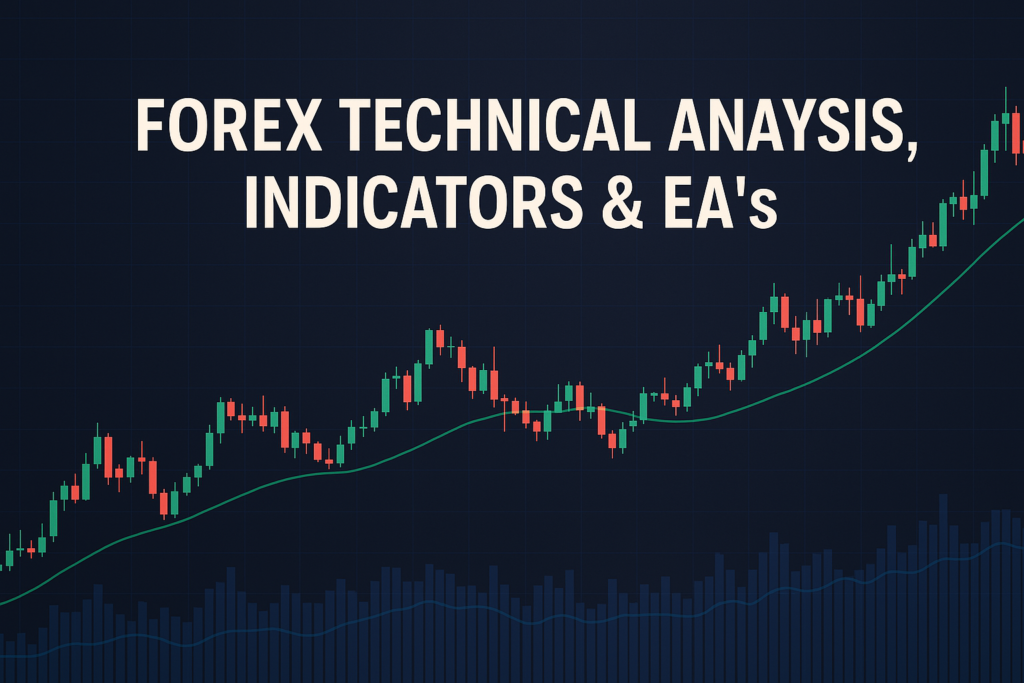
The 50 month moving average is a key tool in Forex trading, helping traders identify trends and make informed decisions.
The 50 month moving average is a powerful tool in Forex trading. It helps traders identify trends by smoothing out price fluctuations. When you look at a price chart, it can sometimes be challenging to see the overall direction. This is where the 50 month moving average comes in. It acts like a guiding light in the often turbulent sea of Forex markets.
However, many traders, whether beginners or professionals, struggle with understanding and applying this concept. They might find it difficult to interpret the signals it gives. This misunderstanding can lead to missed opportunities or even losses. Knowing how to use the 50 month moving average is crucial for traders if they want to navigate the Forex waters successfully.
This article will cover what the 50 month moving average is, how it works, its history, advantages and disadvantages, and various strategies to implement it effectively.
The commodity channel index pattern is another essential tool for traders. It helps identify overbought and oversold conditions in the market, allowing traders to make informed decisions.
What is a 50 Month Moving Average?
What is a 50 Month Moving Average?
The 50 month moving average is simply the average price of a currency pair over the last 50 months. Imagine you are looking at a long road. Sometimes, it’s hard to see where the road is going because of bumps and turns. The 50 month moving average is like a straight line drawn across that road, showing you the overall direction. It helps smooth out the ups and downs of price movements so you can see trends more clearly.
Types of 50 Month Moving Average
There are several types of moving averages, including:
- Simple Moving Average (SMA): This is the basic average, calculated by adding the prices and dividing by the number of periods.
- Exponential Moving Average (EMA): This gives more weight to recent prices, making it more responsive to new information.
- Weighted Moving Average (WMA): Similar to EMA, but assigns different weights to prices based on a specific formula.
How 50 Month Moving Average Smooths Out Price Action
The 50 month moving average smooths out price action by averaging prices over a longer period. This means that short-term price spikes or dips won’t affect the average as much. For example, if a currency pair suddenly jumps in price for a day, the 50 month moving average won’t react dramatically. Instead, it will continue to show a stable trend, helping traders make informed decisions.
Common Periods Used and Why
Besides the 50 month moving average, traders often use other periods like 10, 20, or 100. The choice of period depends on the trader’s strategy. Shorter periods react quickly to price changes, while longer periods provide a more stable view. The 50 month moving average is popular because it strikes a balance between short-term and long-term trends.
The History of 50 Month Moving Average: How It Became Popular
Origin of 50 Month Moving Average
The concept of moving averages dates back to the early 1900s. Traders needed a way to analyze price data without getting overwhelmed by market noise. The 50 month moving average was introduced to help traders see trends over a more extended period. It quickly gained traction among traders seeking clarity in their analysis.
When Did Traders Start Using It Widely?
Real-Life Stories
Many professional traders have shared how the 50 month moving average has helped them make fortunes. For instance, one trader found that by following the 50 month moving average, he could identify when to enter and exit trades. This strategy allowed him to grow his trading account significantly, showcasing the power of this tool in real-life trading scenarios.
Advantages and Disadvantages of 50 Month Moving Average
Advantages:
There are several benefits to using the 50 month moving average:
- Helps Identify Trends Easily: It makes it clear whether the market is moving up or down.
- Useful for Dynamic Support and Resistance: The moving average can act as a level where price often reverses.
- Works Well for Crossover Strategies: Traders can use it alongside other moving averages to find entry and exit points.
Disadvantages:
However, there are also some drawbacks:
- lags behind price movements: Since it’s based on past data, it may not react quickly enough to sudden market changes.
- Can Give False Signals in Sideways Markets: During stable periods, it may generate signals that don’t lead to profitable trades.
How to Apply 50 Month Moving Average on MT4 & MT5
Step-by-Step Guide to Adding 50 Month Moving Average on Charts
To add the 50 month moving average on your MT4 or MT5 platform, follow these simple steps:
- Open the platform and select the currency pair you want to analyze.
- Click on “Insert” in the menu bar.
- Select “Indicators,” then go to “Trend,” and choose “Moving Average.”
- Set the period to 50 and select the type (SMA, EMA, etc.).
- Click “OK” to add it to your chart.
Customizing 50 Month Moving Average Settings
You can also customize the 50 month moving average settings to fit your preferences. Change the colors to make it stand out on your chart. Choose a line style that makes it easy to read. These small adjustments can make a big difference in how effectively you use this tool.
Saving Templates for Easy Application
To save time, consider saving your chart settings as a template. Simply right-click on your chart, select “Template,” and then “Save Template.” This way, you can quickly apply the same settings to other currency pairs without repeating the customization process.
5 to 7 Trading Strategies Using Only the 50 Month Moving Average
1. All Time Frame Strategy (M5 to D1)
This strategy works across multiple time frames. For example, if you see the price above the 50 month moving average on a daily chart, it’s a signal to look for buying opportunities on lower time frames like M5 or M15.
2. Trending Strategies
In trending markets, use the 50 month moving average to identify the trend direction. If the price is consistently above the moving average, look for buying signals. If it’s below, focus on selling opportunities.
3. Counter Trade Strategies
Sometimes, the market may reverse against the trend. If you notice the price crosses below the 50 month moving average after an uptrend, it may signal a potential reversal. Look for selling opportunities in this scenario.
4. Swing Trade Strategies
For swing trading, wait for the price to bounce off the 50 month moving average. If the price retraces to this level and then starts to rise again, it may be a good buying opportunity.
5. Crossover Strategies
Combine the 50 month moving average with a shorter moving average (like the 10 or 20 month). When the shorter moving average crosses above the 50 month moving average, it’s a buy signal. Conversely, a cross below signifies a sell signal.
5 to 7 Trading Strategies Combining 50 Month Moving Average with Other Indicators
1. RSI and 50 Month Moving Average
Combine the 50 month moving average with the Relative Strength Index (RSI) for more reliable signals. If the price is above the moving average and the RSI is below 30, it may indicate a buying opportunity.
2. MACD and 50 Month Moving Average
The Moving Average Convergence Divergence (MACD) indicator can be paired with the 50 month moving average. When the MACD line crosses above the signal line while above the moving average, it’s a strong buy signal.
3. Bollinger Bands and 50 Month Moving Average
Using Bollinger Bands alongside the 50 month moving average can help identify breakouts. If the price touches the lower Bollinger Band while above the moving average, it can signal a buying opportunity.
4. Fibonacci Retracement and 50 Month Moving Average
Combine Fibonacci retracement levels with the 50 month moving average to find potential reversal points. If the price retraces to a Fibonacci level near the moving average, it might indicate a good entry point.
5. Stochastic Oscillator and 50 Month Moving Average
The Stochastic Oscillator can be used with the 50 month moving average to confirm entry points. If the price is above the moving average and the Stochastic indicates oversold conditions, it may be a good time to buy.
Additionally, if you’re interested in learning more about trading strategies, check out our guide on how to trade xauusd in the US.
Top 10 FAQs About 50 Month Moving Average
1. What is the 50 month moving average?
The 50 month moving average is an average of prices over the last 50 months, helping to identify trends in Forex trading.
2. How do I calculate the 50 month moving average?
Add the closing prices of the last 50 months and divide by 50 to get the average.
3. Can I use 50 month moving average for day trading?
Yes, but it’s more commonly used for long-term trading. Day traders often prefer shorter moving averages.
4. What is the best time frame for using the 50 month moving average?
The 50 month moving average is best used on longer time frames like daily and weekly charts.
5. Does the 50 month moving average always work?
No, like any tool, it has its limitations and may not always provide accurate signals.
6. How can I improve my trading using the 50 month moving average?
Combine it with other indicators and follow a well-defined strategy to enhance your trading results.
7. Can I use moving averages for other financial markets?
Yes, moving averages can be applied to stocks, commodities, and cryptocurrencies, not just Forex.
8. What are the common mistakes when using the 50 month moving average?
Common mistakes include relying solely on it for decisions and not considering market conditions.
9. How can I best incorporate the 50 month moving average into my trading strategy?
Use it in conjunction with other indicators, and apply it to confirm trends and signals.
10. Should I use the 50 month moving average for all currency pairs?
It can be used for most pairs, but it’s essential to adapt your approach based on the specific characteristics of each market.
Conclusion
In summary, the 50 month moving average is a valuable tool for Forex traders. It helps identify trends, acts as a dynamic support and resistance level, and can be combined with various strategies. Understanding how to use it effectively can lead to improved trading outcomes.
Before using real money, take the time to test your strategies and get comfortable with the 50 month moving average. Remember, practice makes perfect!
Want to level up your trading skills? Check out trusted insights from CNBC, Benzinga
Expand Your Knowledge
- 📌 Forex Trading Learning Road Map
- 📌 Forex Trading Course with no Fees
- 📌 Forex Trading Issues, Problems, and Solutions
- 📌 Forex Daily Forecast & Live Updates
- 📌 Forex Fundamental & News Analysis: Tomorrow’s Market Movers & Trade Opportunities
- 📌 Forex Education Hub: Learn & Profit
- 📌 Forex Technical Analysis, Indicators & EA’s
Start Trading Today
Ready to take your forex trading to the next level? Open an account with Exness, one of the most trusted platforms in the industry. 👉 Sign Up Now and trade with confidence!
My recommended broker stands out with ultra-low spreads for beginners, instant withdrawals, and zero spread accounts for pro traders.
Trusted since 2008, lightning-fast execution, no hidden fees, and a secure, transparent trading environment—giving you the edge you need to succeed. 🚀
YouTube Video Library: Related Videos
Note: The video above is embedded from YouTube and is the property of its original creator. We do not own or take responsibility for the content or opinions expressed in the video.



